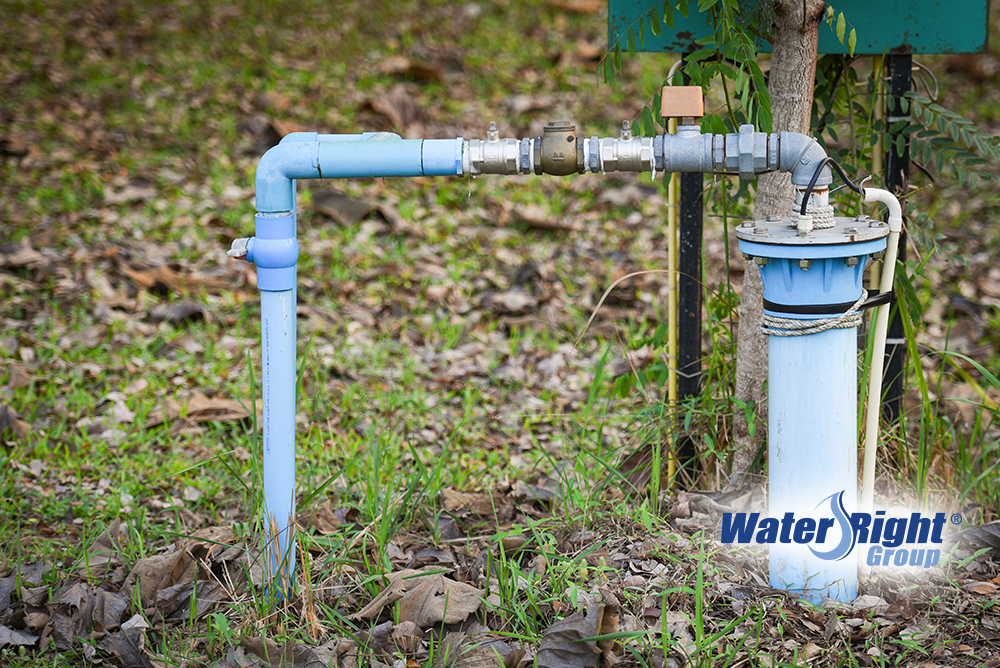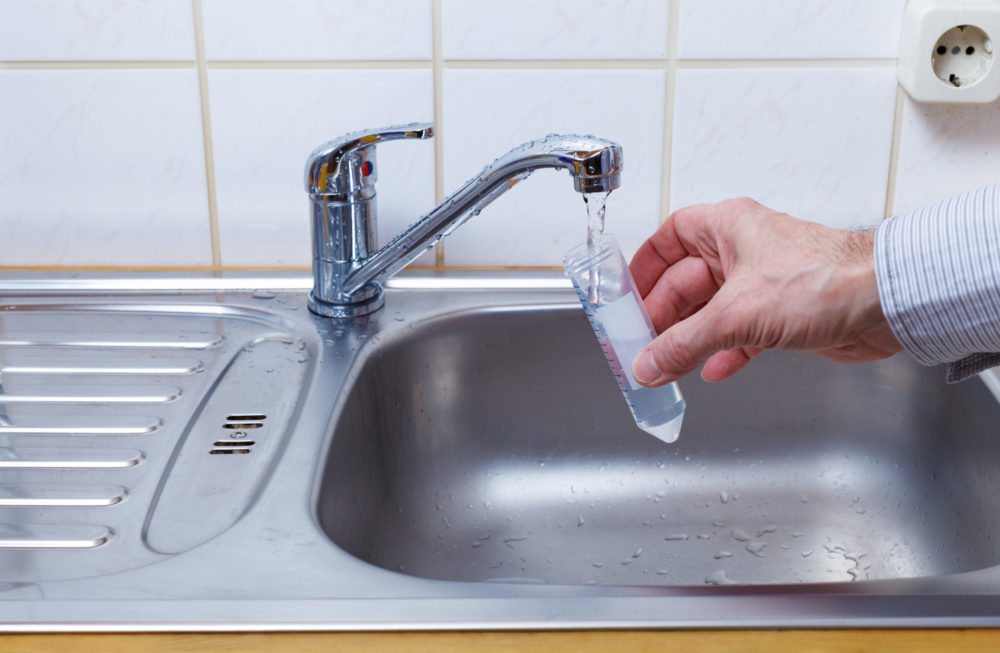
Seasonal Well Maintenance & Testing | Advice for Homeowners
Owning property that gets groundwater from a private well can feel like a lot of pressure (no pun intended). Many people have questions about what they should do to maintain acceptable water quality while avoiding health and safety concerns.
As Mike Hanten, general manager of Water-Right Services and the state-certified Clean Water Testing lab explains, the monitoring situation for well owners is quite different than for those who use city water.
“Municipalities are fully-staffed with people who regularly collect and analyze samples to ensure the public’s water quality is safe. Nobody is doing that for a private well unless the property owner does it for themselves,” he says.
Because water quality is 100% your responsibility if you own a well, you’ll want to follow the recommendations of experts. Here’s some advice from Mike Hanten on monitoring and maintaining a well and pump system.
What’s the Best Time of Year to Test Well Water?
You should be testing the water coming from your well at least once per year. That’s fairly common knowledge in the world of water, yet Hanten says the majority of homeowners forget this important task.
Setting a date on your calendar can help. or you can connect well inspection and testing with another event just as many people change smoke detector batteries when daylight saving time begins and ends.
But is there a specific season when you should be testing well water? Hanten says there are a lot of factors involved with picking the best time to test. That includes your location, your soil composition, and what contaminant you’re looking for.
“The best recommendation I can give is to test your well water on a yearly basis and alter the time of year in which you’re testing so you get a holistic annual picture of what’s going on with your well and water supply,” Hanten says.
Is Well Contamination More Likely During a Certain Season?
While groundwater contaminants vary by region, two basic problems are common in private wells: coliform bacteria and nitrate.
Hanten says spring is a season when bacteria tend to enter well water thanks to increased precipitation.
“The more rain and snowmelt you’re getting, the more likely you are to see coliform bacteria in your well,” he says. “Areas that are prone to that type of thing are places where there is thin soil over fractured bedrock.”
As Hanten explains, “Soil is nature’s filter. When you don’t have a good amount of soil over the bedrock, there’s nothing to filter out bacteria before it hits the bedrock and enters the aquifer.”
Summer and early fall are actually when testing tends to reveal the highest levels of bacteria in well water. There is more heat and moisture during those months. So, bacteria levels can climb through the summer and into the fall until the frost and freezing weather arrive. If you live in an area with cold winters, that is the least likely time for coliform bacteria contamination.
Nitrates are a nutrient found in animal and human waste as well as most fertilizers. According to Hanten, the presence of nitrates is an indicator that surface activities are impacting groundwater quality. In other words, if nitrates are getting into your well water from a nearby farm that is using a lot of fertilizers, other contaminants could be as well.
Hanten says nitrate levels may get diluted in the springtime because of rain and melting snow. If you do have elevated levels, he recommends testing a few times a year as nitrates fluctuate with the seasons and can change based on the source, distance, and land use.
Should You Test Well Water More than Once a Year?

The advice to test well water quality on an annual basis is a minimum recommendation. There may be times when more frequent testing is required.
If you notice something unusual, such as the odor, flavor, or appearance of your well water, have it tested. Any unexpected changes in water quality should be a cue that it’s time to test. Cracks or openings in your well cap can happen at any time exposing it to a bacterial contamination, not just during the peak seasons. If tests reveal elevated levels of a potentially harmful contaminant, follow-up tests for ongoing monitoring may be necessary.
If you’re trying to decide what to test for, Hanten suggests taking a similar approach to what municipalities often check for. That way, well owners cover all the bases regarding the health and safety of their water.
“What municipalities do you can replicate on a private well,” he explains. “They monitor for bacteria all the time. They monitor for nitrates on an annual or quarterly basis, and on a three-year basis they test for everything like arsenic, fluoride, pesticides and industrical contaminants. Well owners don’t have to test for everything on an annual basis. But they can add different contaminants each year to periodically test for things that are concerns.”
Seasonal Well Inspection and Maintenance Tips
In addition to testing well water, property owners are responsible for keeping an eye on the condition of their system. That’s why you should also be conducting a visual inspection of your well at least once per year.
“That doesn’t mean you need to open anything up,” explains Hanten. “It means you take a look at your well and watch for things like bugs crawling into it through any cracks or openings. Is the cap secured? Is there any damage that could allow things to get into your well?”
Certain insects, such as earwigs, carry coliform bacteria inside them. And, even though most wells have vermin-proof caps, little critters can still crawl inside the well if it’s damaged. Check the cap as well as the electrical conduit on the outside of the well to make sure they aren’t compromised.
When there is damage found during a visual inspection, that’s the time to call a professional to have the system serviced and repaired.
Here are a few tips for preventing accidental damage and contamination of a well:
- Don’t tie up your dog to your well cap or conduit.
- Be careful using lawn mowers and other equipment near the well.
- Prevent animals from relieving themselves around the well.
- Don’t spray pesticides too close to the well cap.
- Don’t place a covering over the well cap and conduit.
Hanten calls the last point above a common problem. Homeowners come up with creative ways to hide their well cap and conduit because they don’t like looking at pipes. They use fake rocks, grow flowers and shrubs near it, or build boxes around everything.
“It’s best to keep the well out in the open,” Hanten says. Coverings and vegetation may create an environment that attracts insects and vermin. Fresh airflow is also important because most wells have a screen on the cap that draws in air as the water table drops. Air can have bacteria in it, which may lead to contamination.
If you live in an area with cold winters, a good time to conduct the visual inspection of your well is early spring. Freezing weather can lead to damage and you’ll want to get that fixed before bugs and vermin get inside.
Hanten says to keep in mind that summer is a common time for homeowners to have operational issues with water wells.
“Summer is the highest time of year for water usage,” he says. “That’s when we notice well pumps going out because people are stressing their systems as they fill pools, run sprinklers, and water gardens.”
According to Hanten, the winterization of wells and pumps is only necessary on very old systems that need special attention. In most cases, winterizing your well is a thing of the past.
What Can You Do if Water Testing Reveals Problems?
The majority of the time, groundwater will be safe to use and consume. When you do have problems, rest assured that there are ways to achieve the right water quality.
“Most groundwater health and safety issues have water treatment technologies to resolve them,” Hanten says. “Ignorance is not bliss. Don’t avoid testing because you don’t want to know or think you can’t fix it.”
Your well and your water are your responsibility. Arm yourself with knowledge and prevent problems with regular testing and inspection. When you know the facts, you can contact the right water treatment expert to solve your problem.
Rely on the professionals at Water-Right’s Clean Water Testing for expert analysis that’s simple, fast, and affordable. Or, find a state-certified lab near you.

